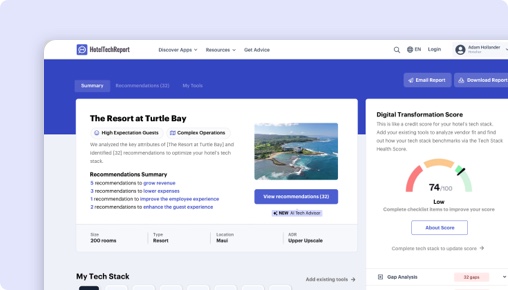Operations
Popular in Operations
POPULAR SEARCHES
FEATURED APPS
Revenue Management
Popular in Revenue Management
POPULAR SEARCHES
FEATURED APPS
Marketing
Popular in Marketing
POPULAR SEARCHES
FEATURED APPS
Guest Experience
Popular in Guest Experience
POPULAR SEARCHES
FEATURED APPS
Sorry, this functionality is only available for verified hoteliers
The project dashboard is a free tool that is only available to verified hoteliers to make adopting new technology easier by streamlining their research and simplifying their communication workflow.

Get personalized product recommendations
Product recommendations advisor

